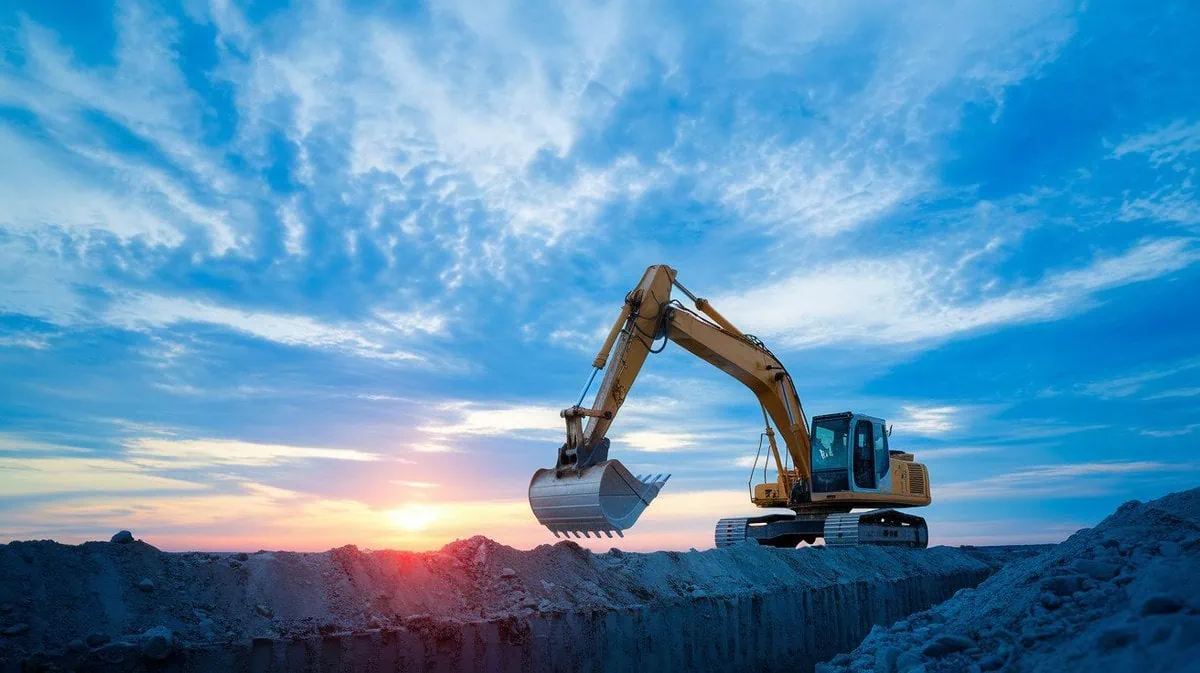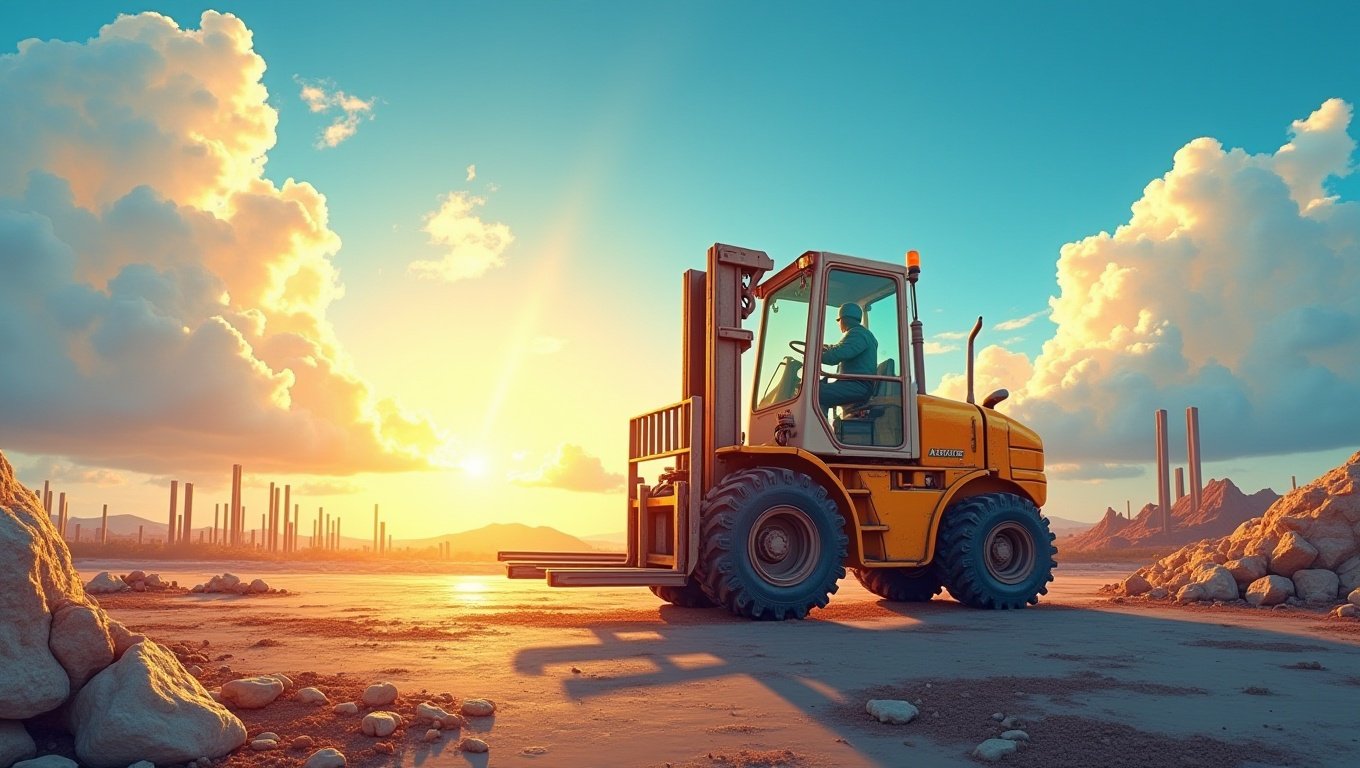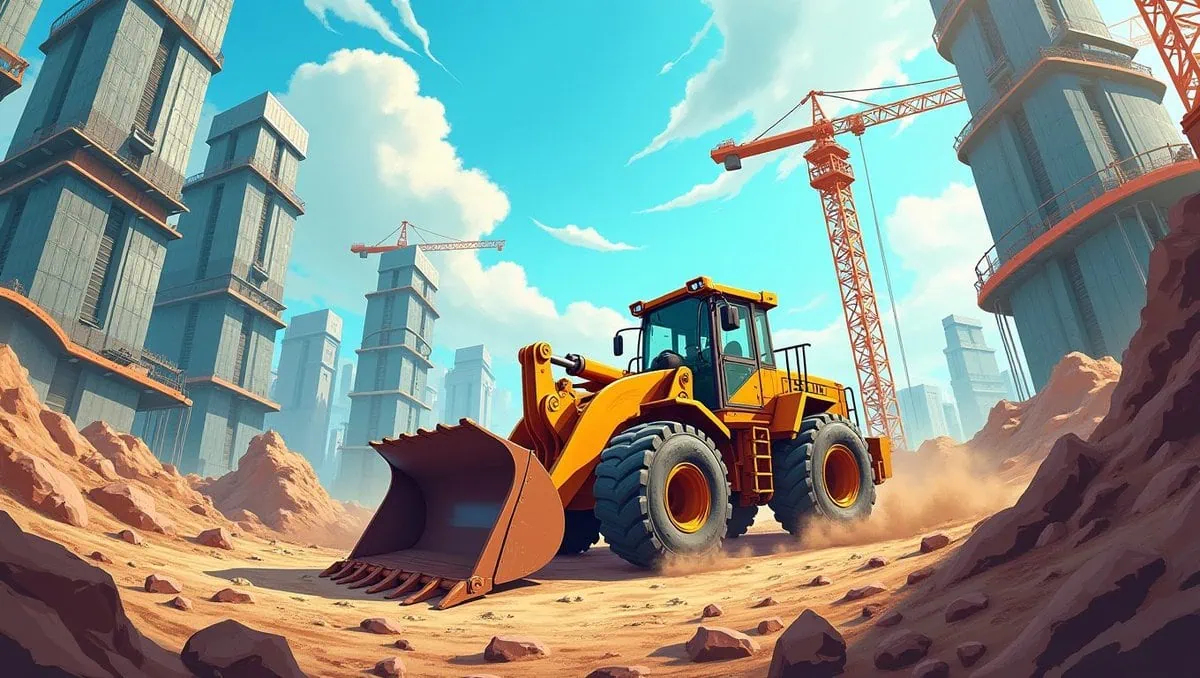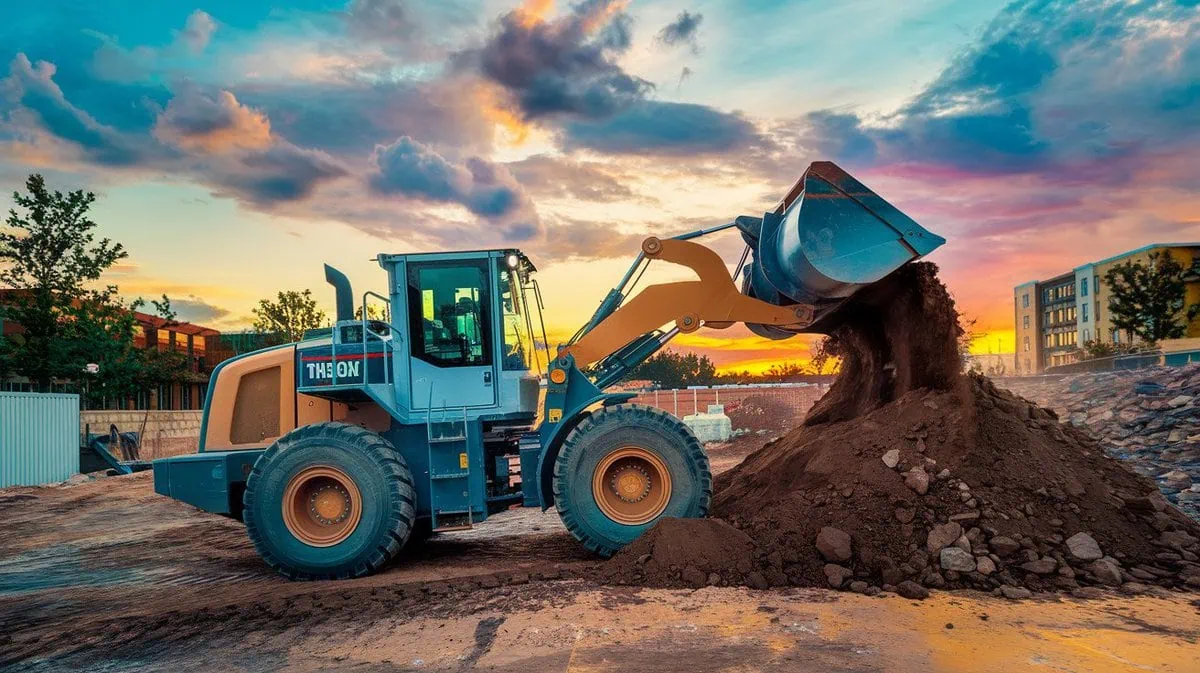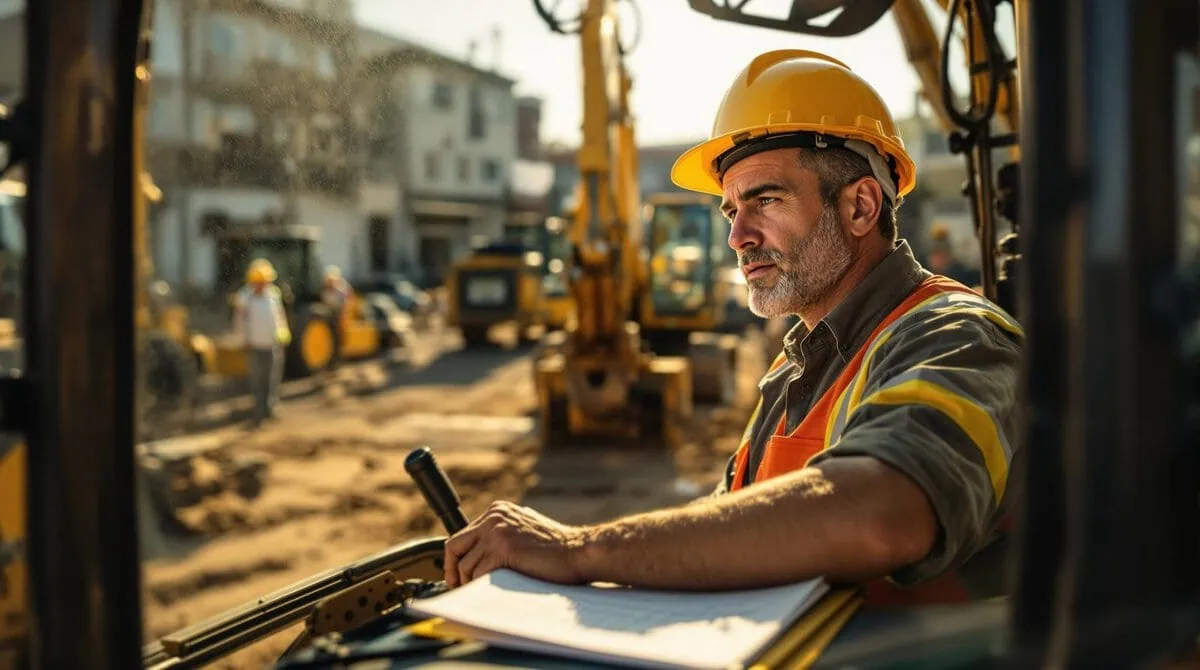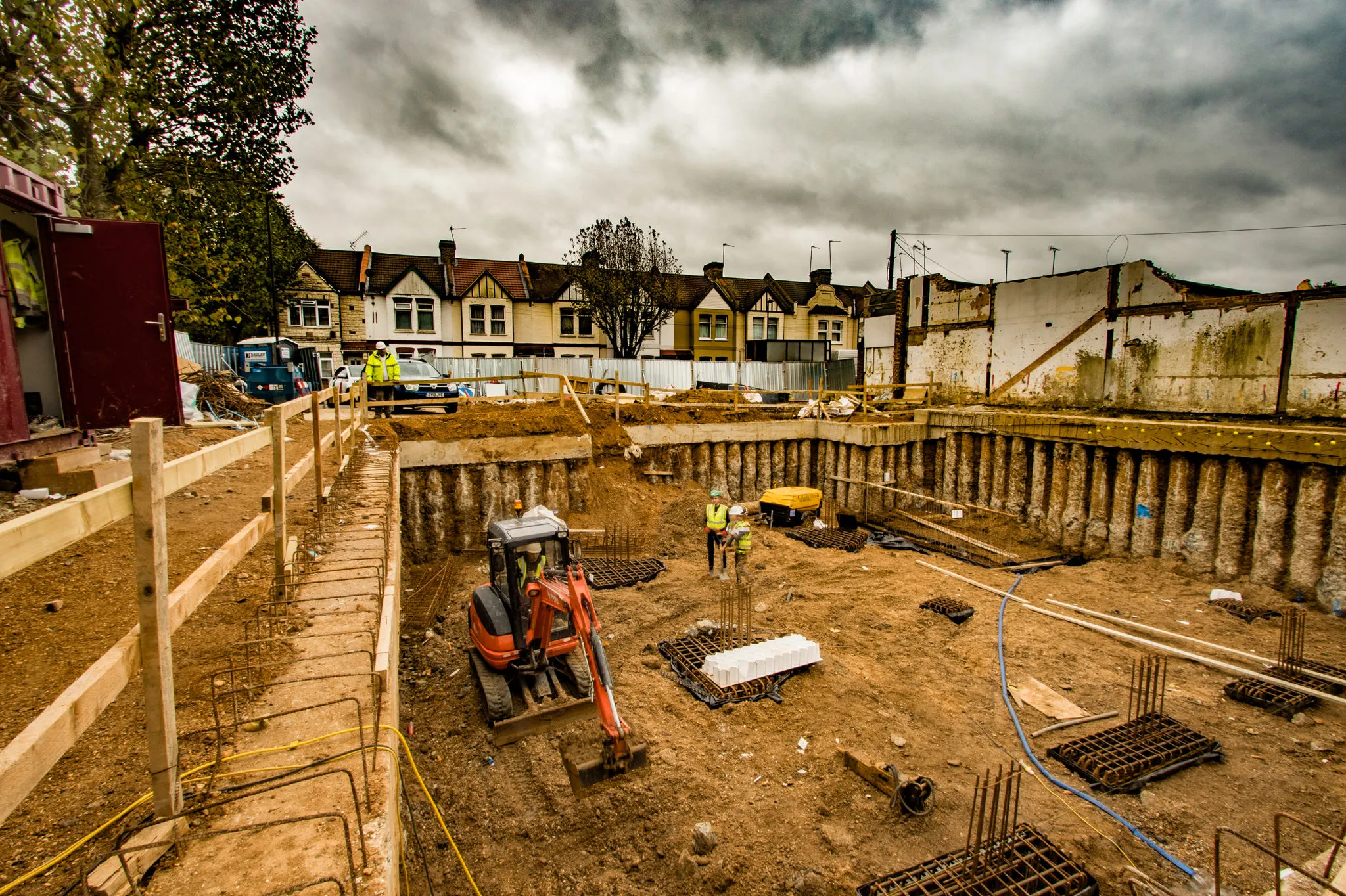Are you unsure which forklift type is best for your specific needs? With 7 different types of forklifts available, each designed for particular tasks and environments, it can be challenging to choose. Selecting the right forklift not only improves productivity but also ensures safety and cost-effectiveness. Choosing the right forklift will depend on your specific needs, whether it’s maneuvering in tight spaces, lifting heavy loads or dealing with rough terrain. In this comprehensive guide, we’ll walk you through the different kinds of forklifts, their features and the industries they excel in, helping you make an informed decision.
The 7 different types of forklifts—counterbalance forklifts, reach trucks, pallet jacks, side loaders, rough terrain forklifts, telescopic handlers and industrial forklifts—serve various industries and operational needs. Each forklift type comes with its own set of strengths, making it an ideal choice for specific tasks.
Let’s explore each of these forklift types in detail, highlighting their uses, benefits and best applications for your operations.
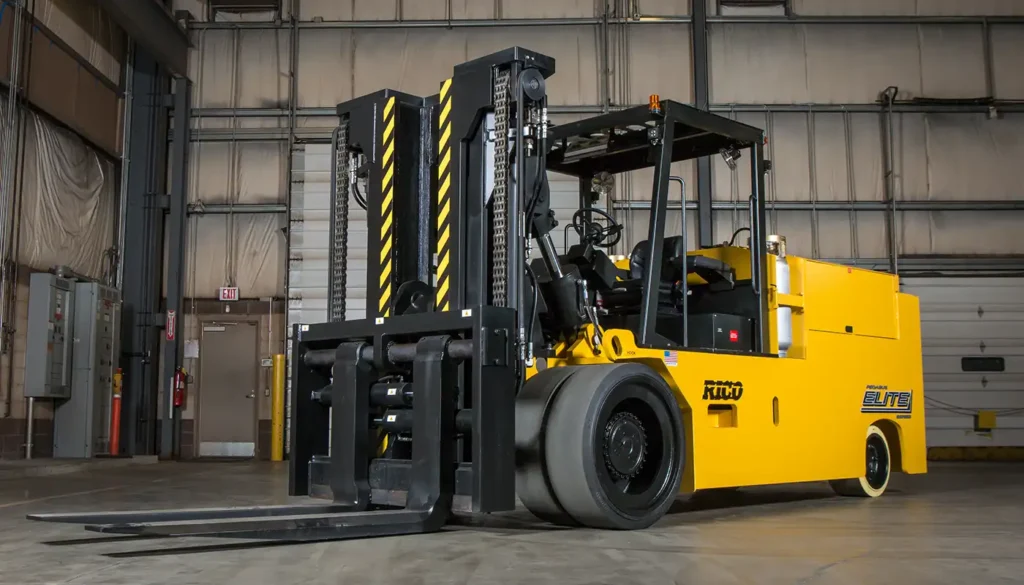
1. Counterbalance Forklifts: The Versatile Workhorse
Counterbalance forklifts are among the most common forklift types used across various industries. Renowned for their versatility, reliability and impressive load handling capacity, these different types of forklifts are a cornerstone in material handling, pallet stacking and general warehouse operations.
Ideal for a range of tasks, counterbalance forklifts offer the perfect balance of strength and maneuverability. They handle loads between 3,000 to 10,000 pounds, making them essential for warehouses, distribution centers and manufacturing facilities.
These forklift types are often used in industries ranging from retail to manufacturing due to their adaptability. Whether used for moving pallets, stacking products or loading shipments, counterbalance forklifts provide a reliable solution. Available in electric, diesel or gasoline models, they are suitable for both indoor and outdoor environments. Electric-powered versions are preferred for indoor operations because they produce minimal environmental impact, while gas and diesel options are commonly employed for outdoor and heavy-duty tasks. The design of counterbalance forklifts, with a weight at the rear to counterbalance the load, provides exceptional stability, allowing operators to lift and transport goods safely.
These different kinds of forklifts are versatile tools for moving materials in medium to large warehouses. The simple controls and excellent maneuverability make them user-friendly, making them the go-to choice for businesses with everyday material handling needs. Whether you require heavy-duty lifting or lighter tasks, counterbalance forklifts are indispensable in industrial, manufacturing and warehousing settings.
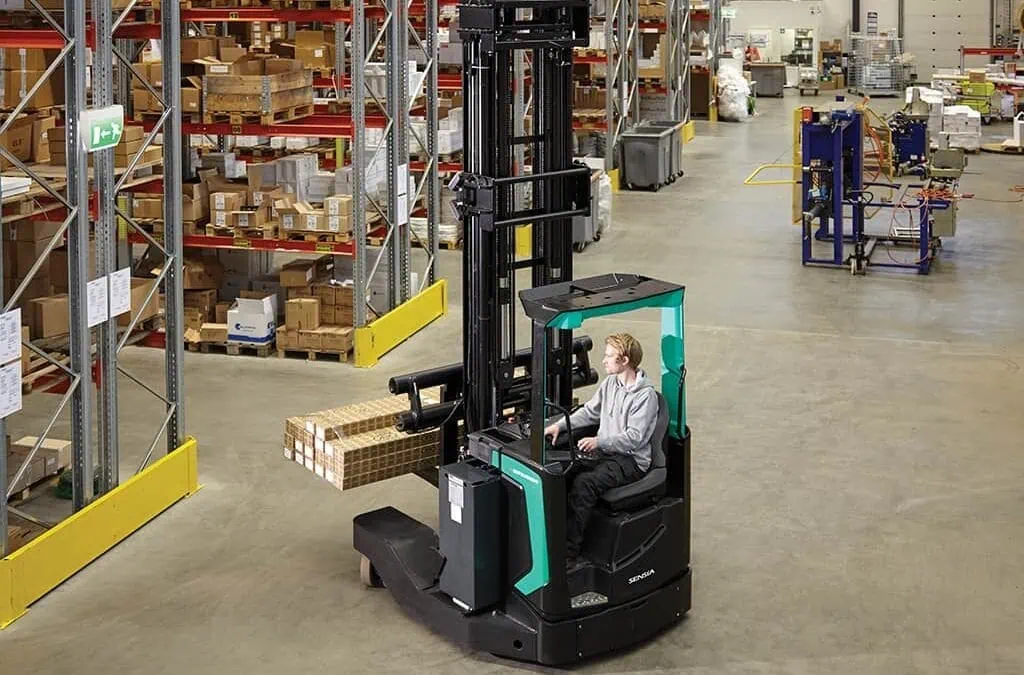
2. Reach Trucks: Designed for Narrow Aisles
Reach trucks are an essential forklift type for operations in narrow aisles and confined spaces. These forklift types are particularly well-suited for facilities where vertical storage is prioritized and aisle space is limited.
Ideal for high-density storage, reach trucks feature extendable forks that can access shelves up to 30 feet high. Their design is optimized for tight spaces, maximizing storage capacity and improving warehouse efficiency.
Among the different types of forklifts, reach trucks excel in high-density storage environments where maximizing vertical space is crucial. Their narrow design allows operators to navigate tight aisles effortlessly, significantly reducing the amount of floor space required for safe and efficient operations. Reach trucks can lift goods up to 30 feet, making them invaluable for tasks that involve retrieving or placing goods on high shelves. The extendable arms allow operators to reach deep into storage racks, optimizing space usage and providing high-level stacking capabilities.
Reach trucks are typically electric-powered, which makes them ideal for indoor environments where quieter, cleaner operations are essential. These different kinds of forklifts are commonly used in warehouses, logistics centers and retail environments that require high stacking and space efficiency. Additionally, the rotating fork mechanism found in many reach trucks enhances stability when handling materials at height, ensuring safe operation even with significant lift heights.
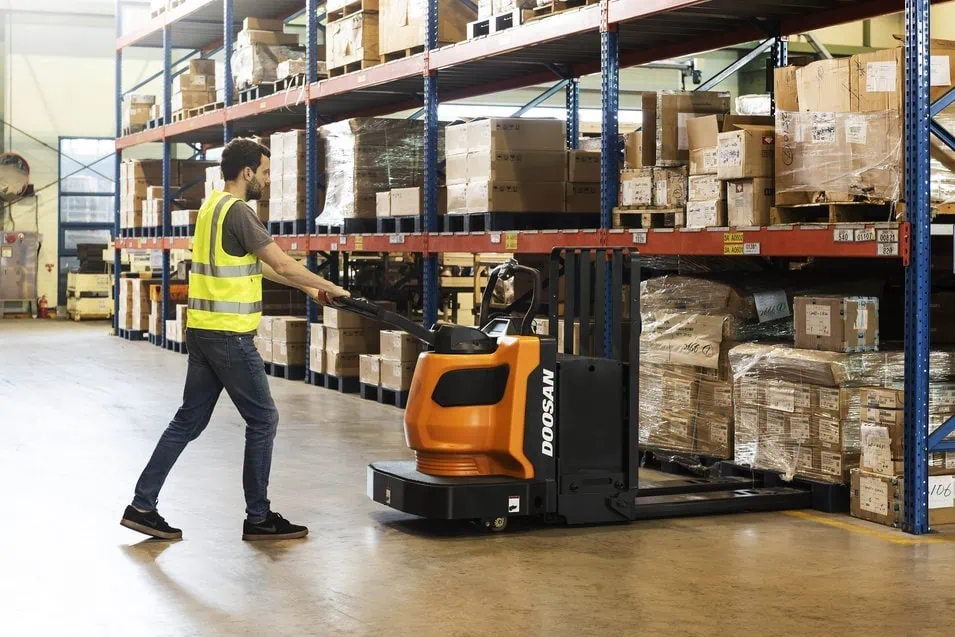
3. Pallet Jacks: Affordable and Efficient
If you’re looking for an affordable and efficient forklift type for moving pallets over short distances, pallet jacks are a fantastic choice. As one of the most common different kinds of forklifts, pallet jacks offer a simple solution for material handling tasks, particularly in smaller spaces like warehouses, grocery stores and loading docks.
Pallet jacks are available in manual and electric versions, offering flexibility and efficiency for businesses on a budget. Whether you need basic manual handling or advanced electric-powered systems, these different types of forklifts can move heavy pallets with ease.
Pallet jacks are one of the most cost-effective forklift types for businesses that need to move heavy loads across short distances. Manual pallet jacks are widely used in retail environments and warehouses due to their simplicity and minimal maintenance requirements. These forklifts, despite their straightforward design, can carry loads up to 5,500 pounds and are incredibly durable. The hydraulic pump mechanism allows operators to lift and lower the forks with ease, ensuring a user-friendly experience even for those who are new to material handling. These types of forklifts are especially favored in settings where limited space and budget constraints exist.
For those requiring a bit more power and convenience, electric pallet jacks offer an excellent upgrade. With automatic lifting and lowering systems, these forklifts reduce operator fatigue, improve productivity and increase maneuverability, making them ideal for busy warehouse or distribution center environments. Whether you’re moving small shipments organizing stock or handling furniture and packaged goods, pallet jacks provide an efficient and affordable way to transport materials.
These forklift types are highly flexible, making them suitable for various industries. They are particularly useful for managing light loads in tight spaces, offering a great solution for businesses looking to optimize efficiency without sacrificing budget.
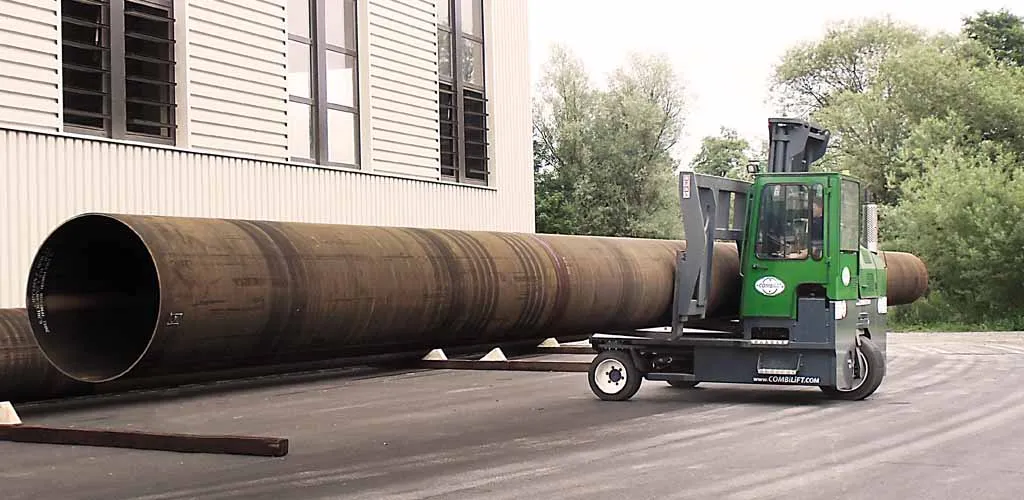
4. Side Loaders: The Specialist for Bulky Loads
When handling long, bulky or irregularly shaped materials like pipes, timber and metal beams, side loaders are the ideal forklift type. These forklifts excel at managing large and heavy loads that require precision, space efficiency and careful handling.
Side loaders are equipped with forks mounted on the side of the vehicle, enabling operators to easily load and move materials in confined spaces. This makes them an essential forklift type for industries like construction, lumber and steel, where large materials need to be transported safely.
Unlike traditional forklifts that lift from the front, side loaders allow operators to load and unload items from the side, making them perfect for narrow aisles and compact environments. They typically handle loads between 3,000 to 10,000 pounds, though some models can lift even heavier materials. Their side-loading design improves warehouse space optimization and maneuverability.
Side loaders are crucial tools for material handling in sectors such as construction and manufacturing, where long materials like pipes, timber and beams are common. Their flexibility and robust lifting capacity make them a reliable choice for industries that need safe and efficient transport of bulky goods.
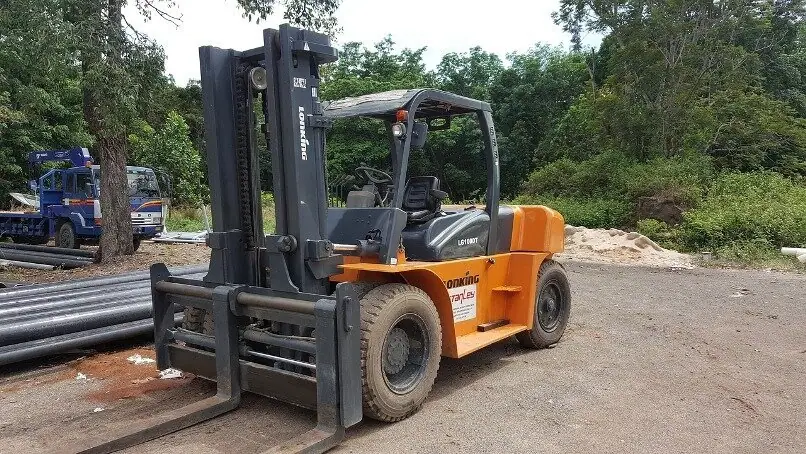
5. Rough Terrain Forklifts: Built for Tough Jobs
When working on rugged, uneven terrain, rough terrain forklifts are essential for transporting heavy loads where other forklifts can’t go. Designed with large pneumatic tires and powerful engines, these forklifts are ideal for outdoor environments like construction sites, farms and industrial operations.
Rough terrain forklifts can navigate gravel, dirt and mud, offering stability for lifting heavy materials in tough conditions. Their higher ground clearance and reinforced frames prevent tipping, while four-wheel drive capabilities allow them to handle slopes of up to 30 degrees. With a lifting capacity ranging from 5,000 to 10,000 pounds, they’re perfect for construction, mining and agriculture.
These forklift types are built to perform in extreme weather, making them indispensable for outdoor heavy lifting and material handling.
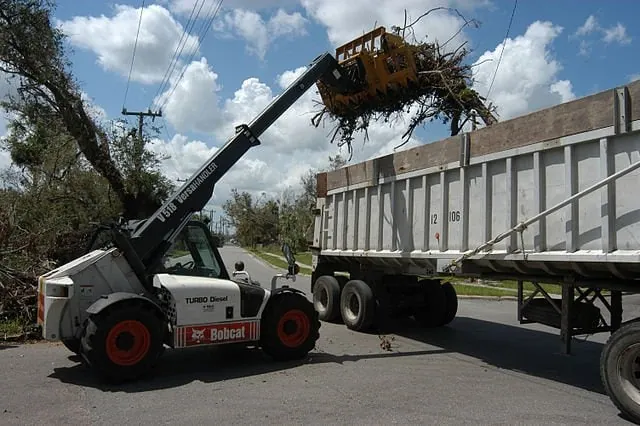
6. Telescopic Handlers: The Multi-Purpose Machines
Telescopic handlers or telehandlers, combine forklift lifting capabilities with crane-like reach, making them versatile for construction and agriculture. With extendable booms reaching up to 50 feet, telehandlers can easily access elevated areas like rooftops or upper floors of buildings, making them ideal for unloading trucks and lifting construction materials.
Equipped with various attachments like pallet forks, buckets and cranes, telehandlers handle a wide range of tasks. In agriculture, they stack hay bales and transport feed, while on construction sites, they lift heavy materials like steel and tools. Their multifunctionality reduces equipment costs and boosts operational efficiency, making them a popular choice for large-scale operations.
7. Industrial Forklifts: Heavy-Duty Giants
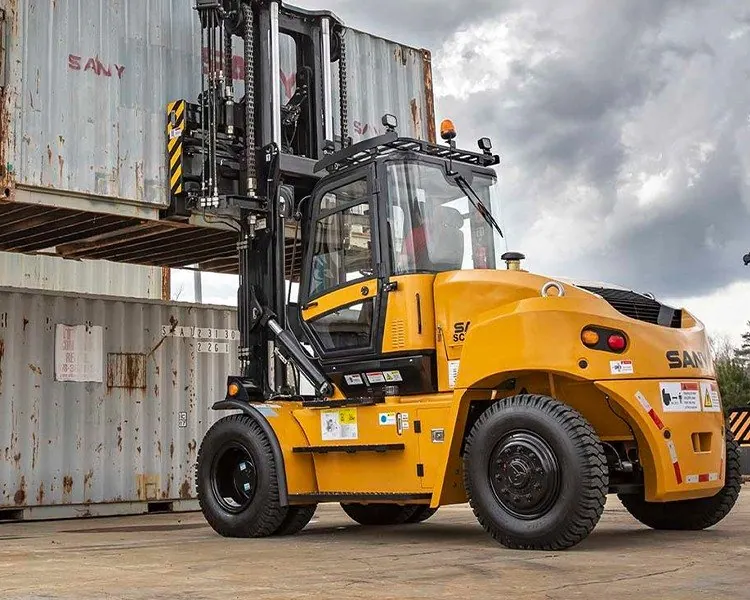
For industries that deal with extremely heavy loads, industrial forklifts provide the power and capacity needed to lift and transport large, bulky items.
Industrial forklifts are built for heavy-duty applications, capable of lifting and moving loads that weigh up to 30,000 pounds or more. They are commonly used in shipyards, steel mills and large-scale manufacturing facilities.
Industrial forklifts are heavy-duty machines designed to handle large, heavy and bulky materials, such as steel beams, containers and machinery. These forklifts typically feature enhanced hydraulic systems and reinforced frames to support massive weight capacity. They are often found in industries like shipbuilding, automotive manufacturing and large-scale logistics operations. With a lifting capacity that far exceeds standard forklifts, industrial forklifts can transport materials in tough conditions with reliability and safety.
Unlike lighter forklift types, industrial forklifts have larger tires and advanced suspension systems, enabling them to navigate challenging work environments. Whether you are moving heavy industrial equipment, stacking large containers or unloading cargo at a shipping port, industrial forklifts provide the power, stability and durability needed for these demanding tasks.
How to Choose the Right Forklift for Your Needs
Choosing the right forklift for your business is a critical decision. With so many forklift types available, from counterbalance forklifts to reach trucks and rough terrain forklifts, it’s crucial to understand the different types of forklifts and how they suit your specific operational needs. Whether you’re managing a warehouse, construction site or agricultural business, selecting the appropriate forklift can improve efficiency, enhance safety and reduce operational costs. Factors such as load capacity, terrain type and lift height all influence your decision-making process. This guide helps you navigate these choices to find the best forklift type for your needs.
When choosing a forklift, assess the weight of the loads, the terrain conditions and the layout of your workspace. Lift height, fuel type and overall cost of ownership are also key factors. Familiarizing yourself with the 7 different types of forklifts can guide you in making a more informed decision.
To choose the best forklift type for your operations, you must evaluate several factors. Here’s a closer look at the most important considerations:
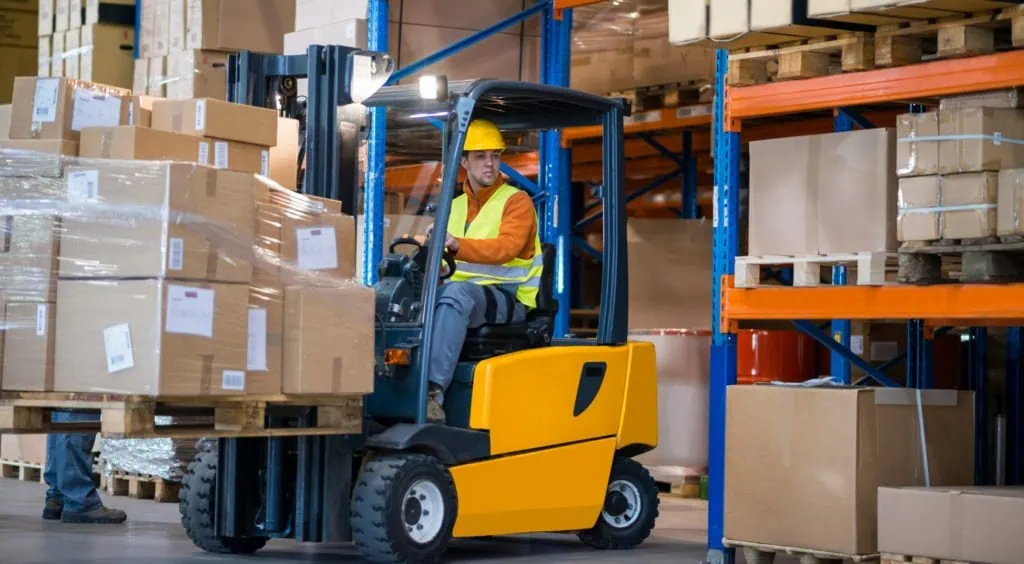
1. Load Capacity
Understanding the load capacity required for your operation is essential when selecting a forklift. Each forklift type has a specified weight limit, which can vary significantly across different kinds of forklifts.
Forklifts come with load capacities ranging from 3,000 to 30,000 pounds. Select a forklift type that matches your load requirements to ensure efficiency and safety.
Smaller forklifts, such as counterbalance forklifts and pallet jacks, are suitable for light loads. For heavier materials, rough terrain forklifts or industrial forklifts are more appropriate. Always ensure the forklift’s load capacity aligns with the weight of your materials to avoid damage or safety risks.
2. Terrain Type
The operational environment plays a significant role in selecting the right forklift. The terrain type will determine whether you need a more rugged forklift or one designed for smooth, indoor surfaces.
For smooth indoor floors, reach trucks or counterbalance forklifts work well. For rough, uneven surfaces, rough terrain forklifts and telehandlers are better suited.
Forklifts are optimized for specific environments. If you’re working in outdoor conditions such as construction sites, choose a rough terrain forklift. These machines are built to handle uneven terrain and large loads with high ground clearance and large tires. In contrast, if your operations are indoors, an electric forklift like a reach truck is more ideal. Reach trucks provide excellent maneuverability in tight aisles, making them suitable for warehouses and distribution centers.
3. Size and Maneuverability
Forklift size affects its maneuverability, which is crucial in tight spaces. Forklift types vary in size and agility and choosing the right one ensures smooth operations in your workspace.
Smaller forklifts like pallet jacks are ideal for confined spaces, while larger forklifts such as rough terrain models are better suited for expansive outdoor areas.
In a warehouse with narrow aisles, a reach truck is the optimal choice for its ability to maneuver easily in tight spaces. On the other hand, rough terrain forklifts are bulkier but necessary for outdoor or expansive job sites where more space is available. Choose a forklift based on your workspace’s layout to ensure operational efficiency.
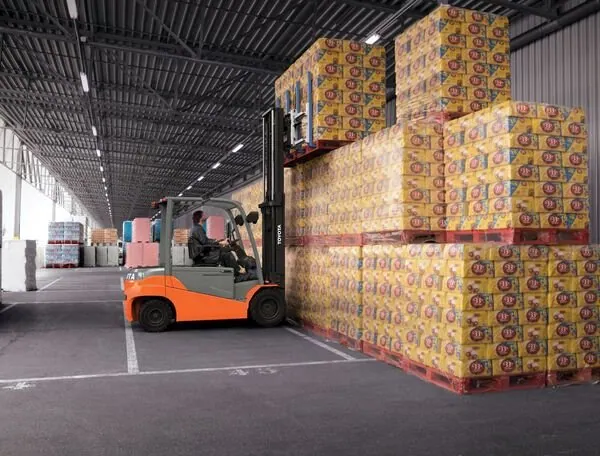
4. Lift Height
Consider how high you need to lift materials to determine the best forklift type. Different forklift types offer various lift heights, from low to very high.
Reach trucks offer lift heights up to 30 feet, while telehandlers can extend up to 50 feet. Choose the forklift that meets your specific lifting needs.
Forklifts like reach trucks are perfect for stacking goods in high racks, offering lift heights of up to 30 feet. For higher lifting needs, such as multi-story construction projects or unloading containers at great heights, telehandlers with extendable booms are ideal, reaching heights up to 50 feet or more.
5. Fuel Type
The fuel type of a forklift affects its performance, cost and suitability for different environments. The most common forklift types use electric, diesel, propane or gasoline.
Electric forklifts are quieter and more environmentally friendly for indoor use. For more power, diesel or gasoline forklifts are suitable for outdoor or heavy-duty applications.
For indoor use, electric forklifts are preferred due to their zero emissions and lower maintenance costs. However, for rugged outdoor environments where more power is needed, diesel forklifts are better suited. If you require flexibility, propane forklifts offer a balance of power and emission control for both indoor and outdoor tasks.
6. Budget and Total Cost of Ownership
When evaluating forklift options, consider not just the purchase price, but the long-term operating costs, including maintenance, fuel and repairs.
Forklifts can have varying costs based on the type, but also factor in maintenance and fuel expenses. For example, electric forklifts have lower operating costs than diesel models.
Smaller forklifts such as pallet jacks have lower upfront costs but may incur more frequent maintenance costs over time. On the other hand, heavier-duty machines like rough terrain forklifts or telehandlers may have higher initial costs but are more durable, providing a better long-term investment.
Selecting the right forklift for your business is crucial for improving operational efficiency and safety. Understanding the 7 different types of forklifts and their uses will help you choose the best forklift type based on factors like load capacity, terrain, lift height and fuel type. Whether you need a counterbalance forklift, a reach truck or a rough terrain forklift, understanding your specific requirements will ensure a more productive, cost-effective operation.
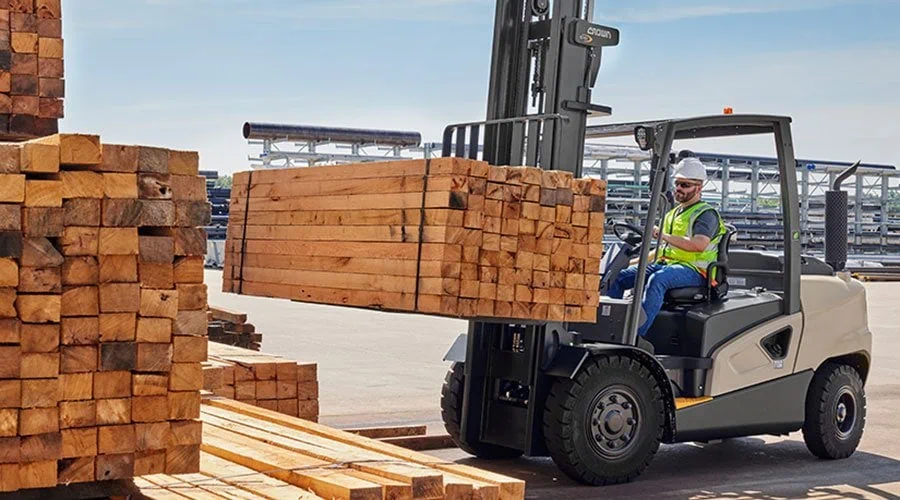
Summary
The 7 different types of forklifts each offer unique capabilities suited to specific tasks and environments. By understanding their uses, you can select the forklift that best meets your operational needs, increasing both efficiency and safety in your workplace. We are leading supplier of ued machinery in China, if you have any questions or problems, please feel free to contact us now.

